How did you get into bartending?
I've been tending bar for about 15 years. I started tending bar as a senior in college at UT Austin. I moved to New York City and spent about nine years up there, mostly working in dive bars, neighborhood bars. I didn't really start doing the craft stuff until I moved back to Austin in 2011. I had my bachelor's in Theater Writing but when I got back to Austin I realized that I had been bartending, at that point, a third of my life. It certainly seemed that I should try to take it more seriously and make a career out of it. I didn't want to be 40-something, 50-something slinging drinks in a beer and shot bar, dealing with a bunch of rowdy assholes. I had to elevate my game.
What are your thoughts on the idea of craft?
It's complicated. I actually really don't like the word 'craft' that much. I feel like we haven't found a better word for it. The word is tough in general. It just seems to come with a certain amount of pretentiousness. I'm not calling myself an artisan. I'm a bartender who takes his work pretty seriously. I'm glad I spent 10 years working in neighborhood dives because those are institutions that really matter. With that said, I'm glad people are pursuing drinks that are nicer and balanced. To me, really nice cocktails are like a really nicely curated jukebox. It's part of the experience but ideally it's not the only reason to hang out. If you find yourself going to a bar you don't like because they make a cocktail really well, I'm sad for you and I think your priorities are all messed up.
What's your approach to bartending?
The space is the most important thing. The space dictates the type of cocktails I'm going to prepare. The Townsend has a very classical feel to it. There's not a lot of odd-ball compound syrups being made. You're not seeing a whole lot of culinary shrubs or tinctures. I want this to be the least cerebral cocktail bar you can possibly go to in Austin.
What makes Kinsman Rakia an interesting spirit to use in cocktails?
The fact that it's bone dry but has bright fruit to it as well makes it weirdly and wonderfully versatile. I've had a lot of fun using it in split-spirit cocktails to help reinforce the fruitiness in a bourbon or a scotch. It's a great spirit. It's well structured. It has depth. Honestly, it's just well made. It's not that it excites me because I've never tasted an apricot before. It excites me because it's honest to God, solid craftsmanship. I like working with it because you can make delicious cocktails with it.
What ingredients play well with the spirit?
It' delightful with all your citrus. It's great because there's a lot you can layer on top of it. It's fun to use in spirit forward cocktails. It can support hard spice, herbaceous notes. You can mind fuck people with it. You can hit a drink with a bunch of fruit but with the Rakia it stays a super dry cocktail. I love hitting it with absinthe. I just love it. Don't get me wrong, I like hitting everything with absinthe but with this spirit, it's screaming for it.
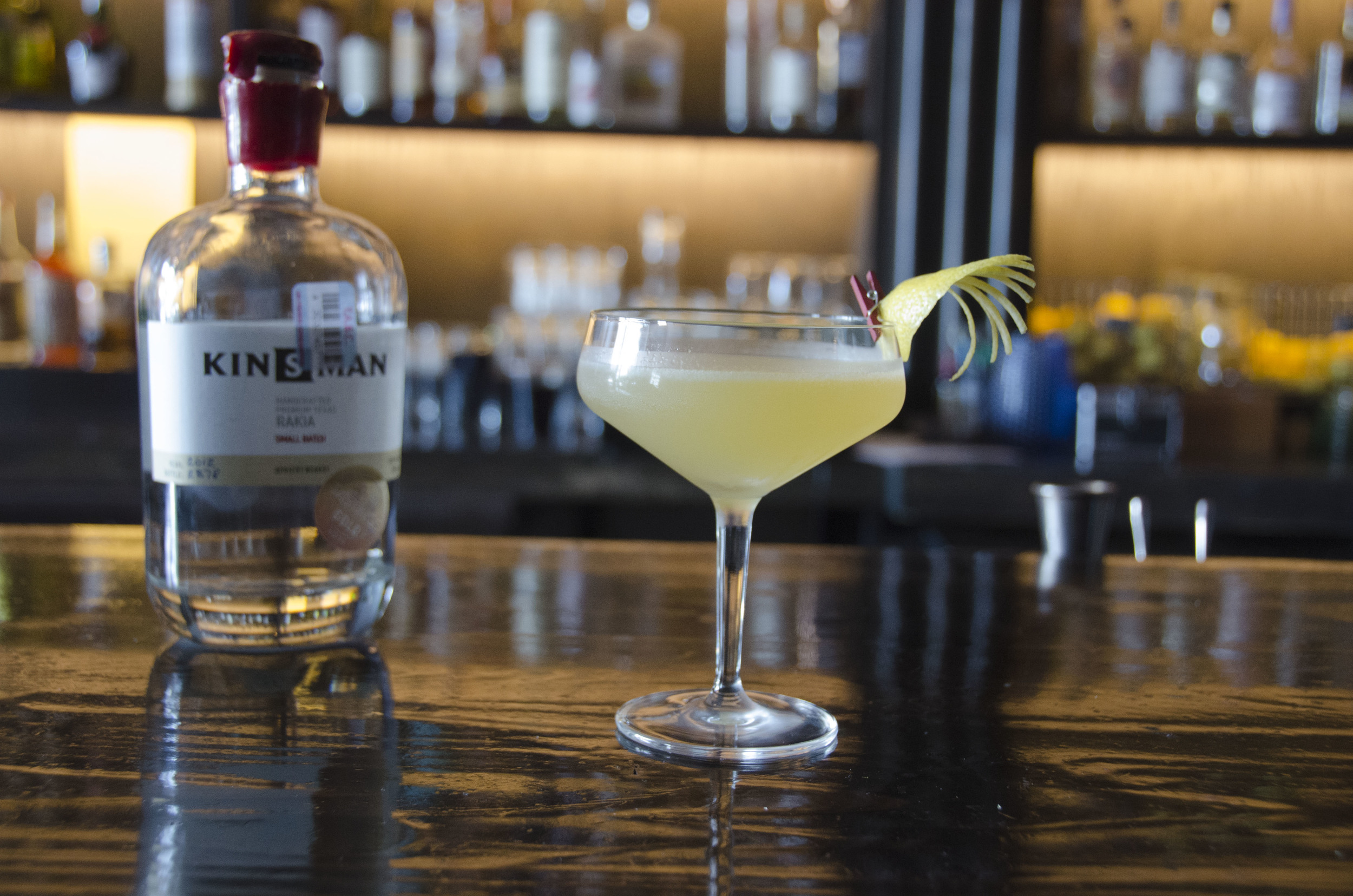


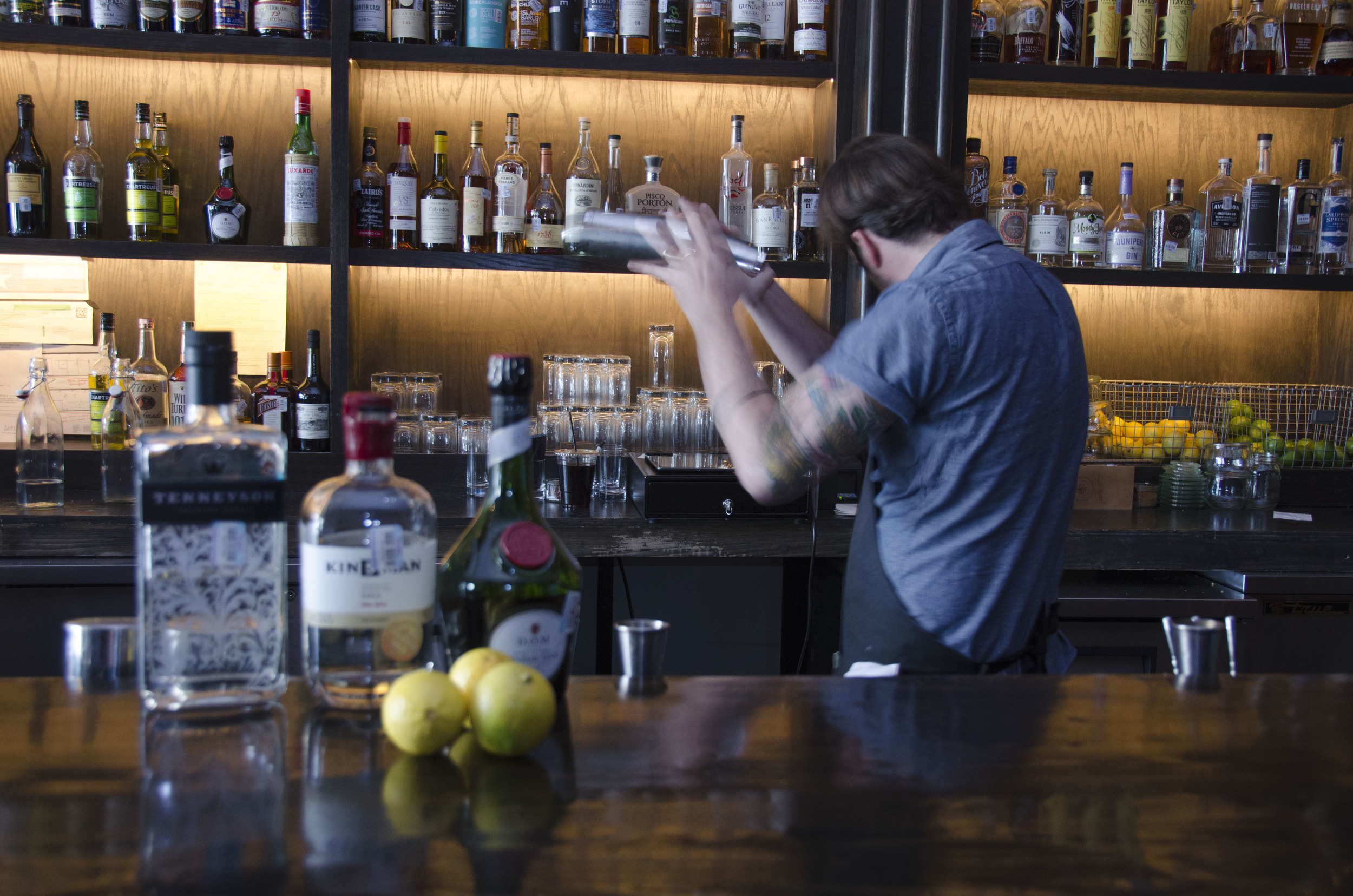

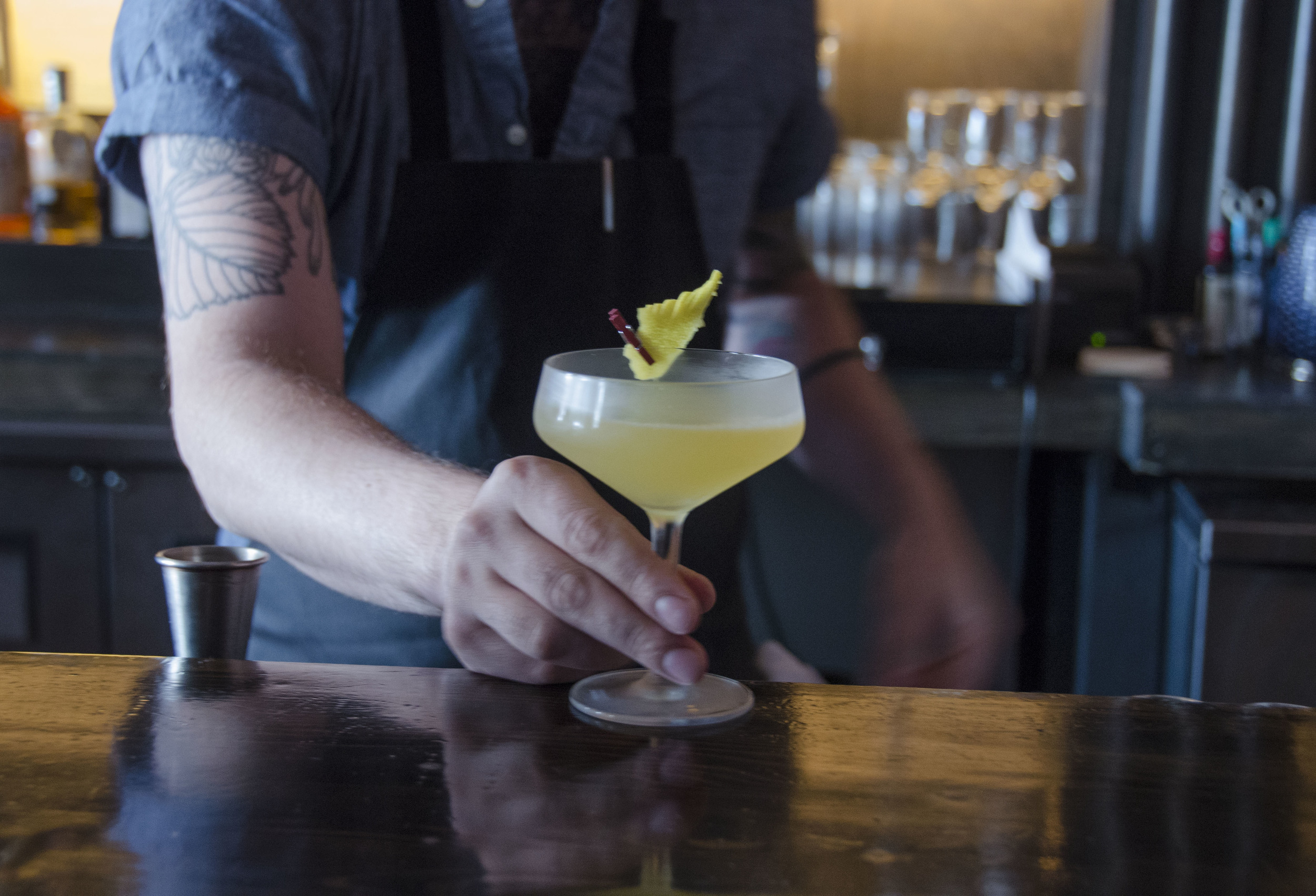
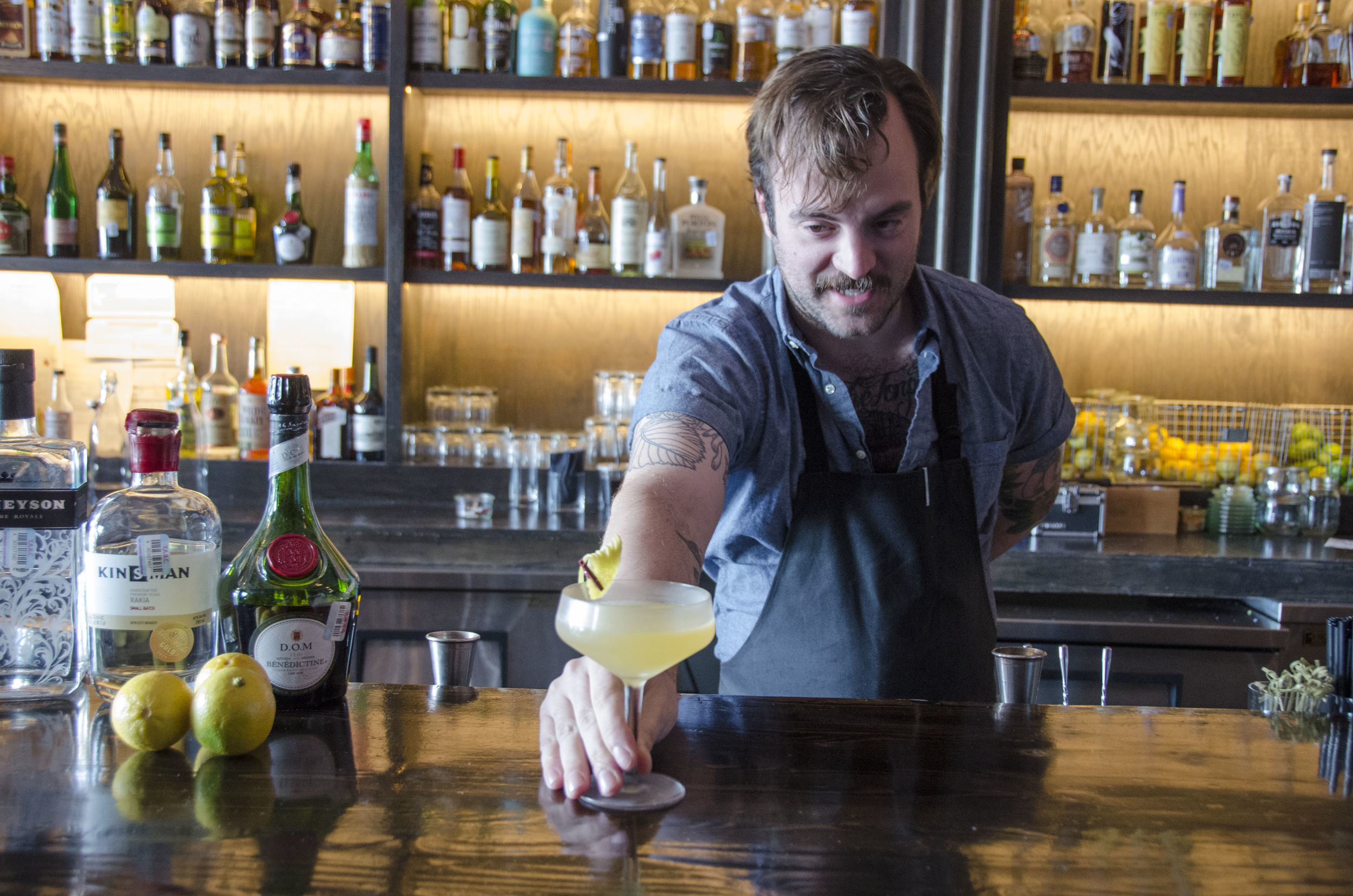
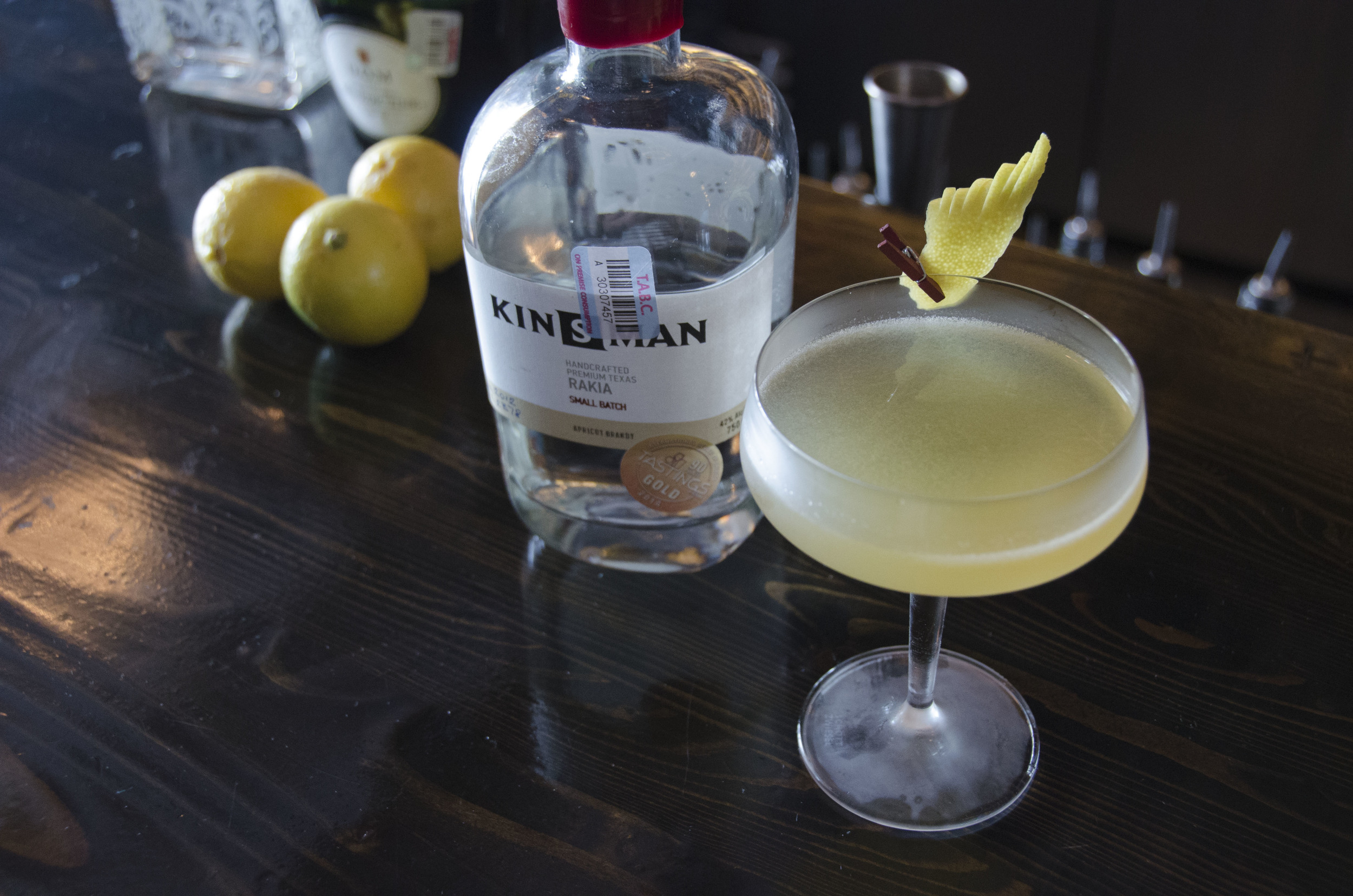
Photos by Sara Ellis/Dorćol Distilling Company
Gypsy Marching Band
1 1/2 ounces Kinsman Rakia
1 ounce Benedictine
1/2 ounce lemon juice
One bar spoon absinthe
Instructions: Combine ingredients into a cocktail shaker. Add ice and shake. Strain into a chilled coupe. Garnish with lemon zest.
Cocktail by Justin Elliott of The Townsend in Austin, Texas

